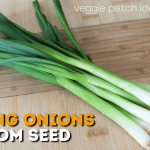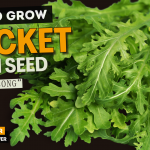How to sow Lettuce from seed a beginners guide. Grow lettuce beginner Help Growing lettuce from seeds is a straightforward and rewarding gardening project. Here’s a step-by-step guide to help you successfully grow lettuce:
1. Choose the Right Time: Lettuce is a cool-season crop and prefers cooler temperatures for germination and growth. You can plant lettuce in early spring or late summer for a fall harvest. In hot climates, consider planting lettuce in the cooler months of the year.
2. Select the Right Lettuce Varieties: There are various types of lettuce, including loose-leaf, romaine, and head lettuce. Choose a variety that suits your taste and growing conditions. Some popular varieties include Butterhead, Romaine (Cos), and Leaf lettuce.
Buy lettuce seeds from Amazon UK
3. Prepare the Soil: Lettuce prefers well-draining soil with plenty of organic matter. Prepare the soil by removing debris and breaking up clumps. Incorporate compost or well-rotted manure to improve soil structure and fertility.
4. Sow the Seeds: Lettuce seeds are small, so sow them thinly. Create rows in your prepared soil and sow the seeds about 1/4 inch deep. Space the seeds according to the variety you’re planting. For loose-leaf lettuce, you can sow the seeds more densely, while head lettuce needs more space.
5. Watering: Keep the soil consistently moist during the germination period, which usually takes around 7 to 14 days. Use a gentle mist or watering can to avoid displacing the seeds. Once the seedlings are established, water regularly to keep the soil evenly moist.
6. Thinning: When the lettuce seedlings have a few leaves, thin them out to provide adequate spacing for proper growth. For leaf lettuce, thin the plants to about 4 to 6 inches apart. Head lettuce may need more space, so follow the recommended spacing on the seed packet.
7. Fertilizing: Lettuce doesn’t require heavy fertilization. You can apply a balanced, all-purpose fertilizer at half the recommended strength when the seedlings are about 3 to 4 weeks old. Avoid over-fertilizing, as this can lead to excessive leaf growth and bitterness.
8. Mulching: Applying a layer of mulch around the lettuce plants can help retain moisture, regulate soil temperature, and prevent weed growth.
9. Pests and Diseases: Keep an eye out for pests like aphids, slugs, and snails. Regularly inspect your plants and take appropriate measures to control pests if necessary. Proper spacing and good air circulation can help prevent diseases.
10. Harvesting: You can start harvesting lettuce leaves when they reach a suitable size, usually around 4 to 6 inches long. For loose-leaf varieties, simply snip the outer leaves, allowing the inner leaves to continue growing. For head lettuce, wait until the heads are firm and compact before harvesting.
By following these steps and providing the right care, you can enjoy a steady supply of fresh, homegrown lettuce throughout the growing season.
What Next?
👇🏼 Let me Guide you through the season “NEWSLETTER” ✅ Always know what to sow and when, your full guide to the growing season. (Monthly Newsletter) Simple easy to follow (No Fluff, Spam or filler) just good advice. https://veggiepatchideas.substack.com/
✅ Helpful links
Take a look at my Amazon store front for guides and product reviews of the things that you need.
RHS: facts about grow your own Click here
Just starting your veggie patch? Start here with our beginners guide
Problems on the allotment? Remove Couch Grass or Remove Bindweed
Looking for an allotment in the UK? Try searching here first GOV.UK
The national allotment society Click Here
Other sites we love Gardeners world


